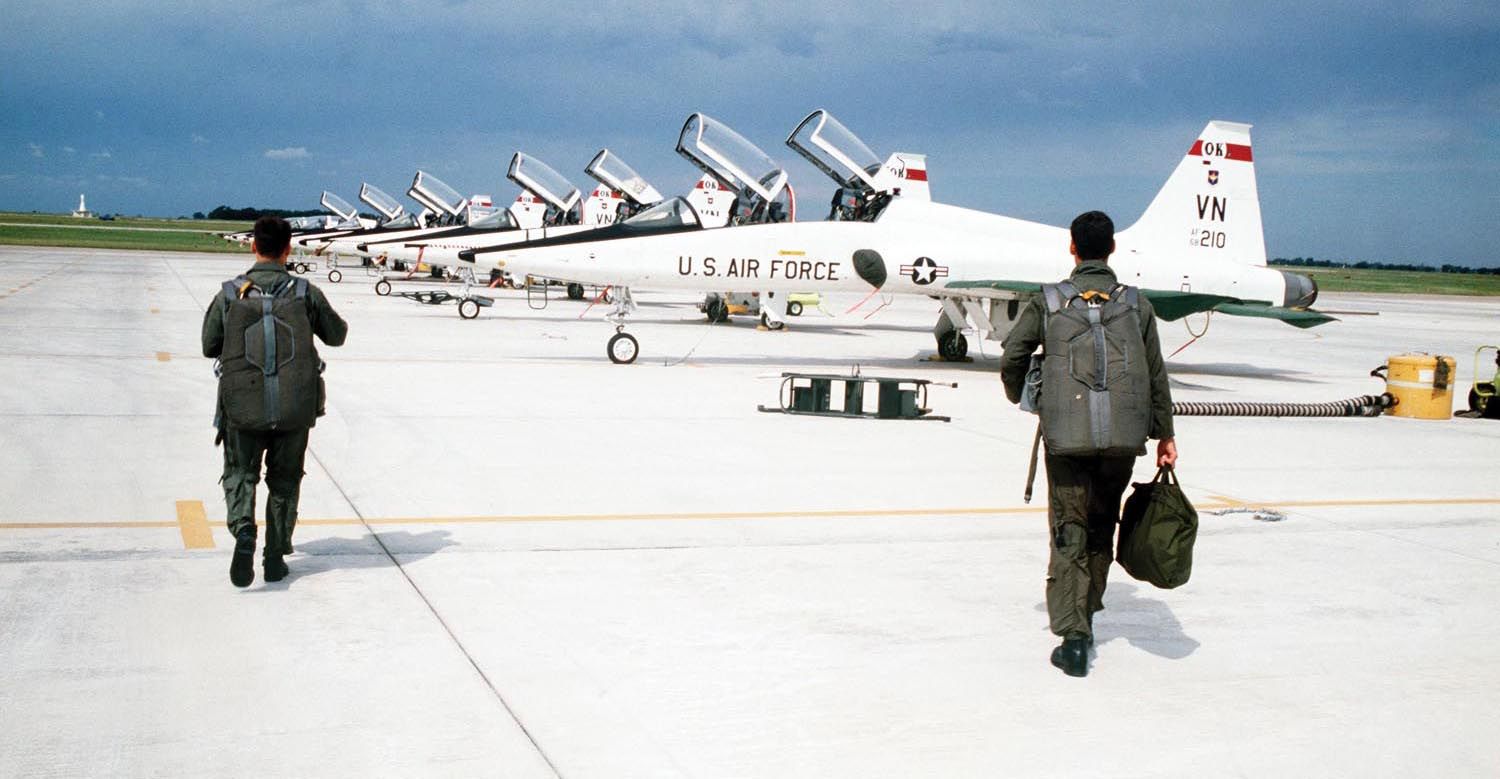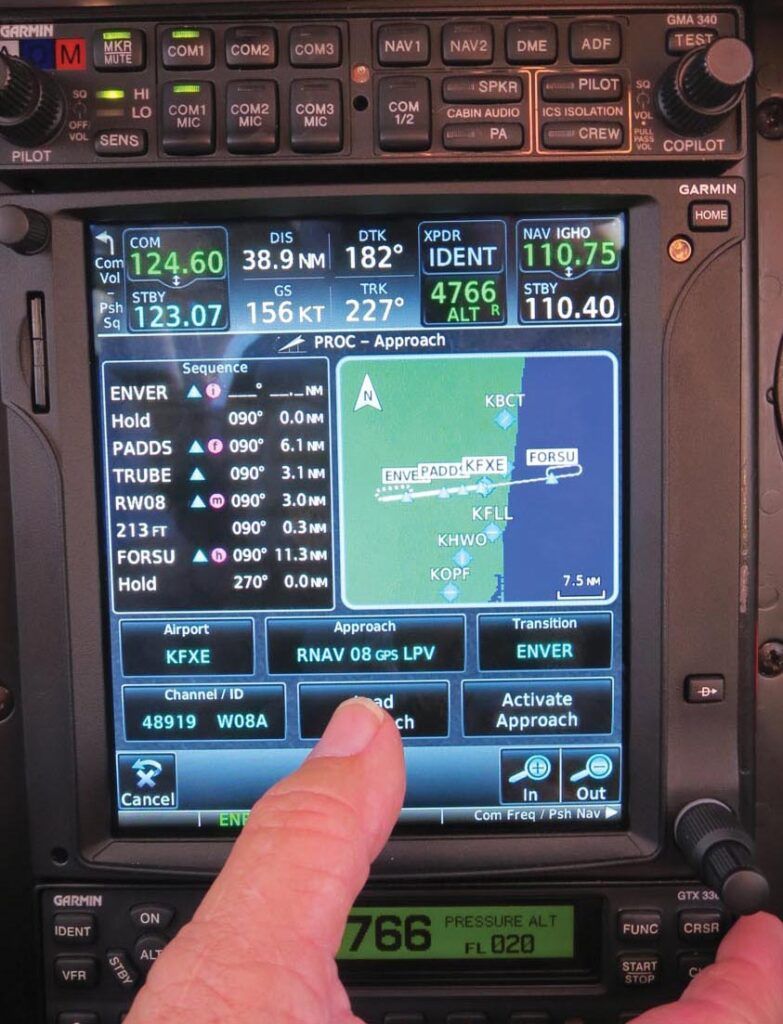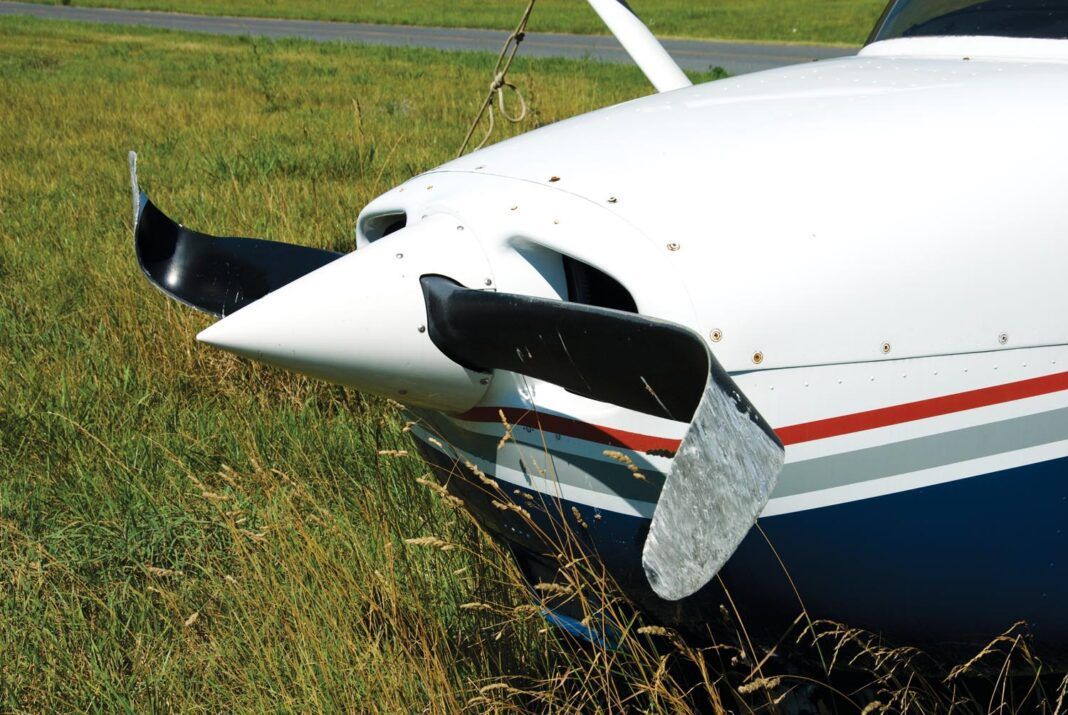My buddy, talking about the first time he flew in a jet: “I was so far behind the aircraft, I was still walking out of the FBO when we rotated.” This reminded me of the first time I flew in a T-38, the “White Rocket.” It felt like I was being shot out of a cannon.
There I was, a U.S. Air Force student pilot on my first T-38 flight, a flight-suited lump of clay in the front seat, watching in terror as the world blasted by. As the main gear left the ground at what seemed like 500 knots, I thought, “No WAY can I ever fly this thing! Less than 20 flight hours in the jet later, I soloed it. It was either learn how to fly the ’38 in a very short period of time or “go sell shoes in Omaha,” as the instructor pilots (IPs) frequently threatened (not that there’s anything wrong with that).
‘Chair Flying’
The T-38 is a beast. Traffic pattern airspeed? A mere 300 knots. Going cross-country? Point-nine (0.9) Mach at FL390. Flying this fast has gotten some very, very good pilots in trouble—or worse. NASA pilots, Air Force T-38 Instructor Pilots, those kinds of good pilots. As I’ve advocated in previous articles, one thing we student pilots did was “chair fly.” A lot.
We’d would go over and over the procedures in “real time”—mimic raising the gear, the flaps, movement of the throttles and making radio calls at the speed they happened—quickly. We also studied together a lot, using flashcards and drilling each other. At first it was all rote memorization—later came understanding. Drilling, chair-flying, then going out and flying the aircraft. Rinse, repeat.
In Top Gun, Tom Cruise says, “There’s no time to think up there—if you think, you’re dead.” In Hollywood, maybe. In real life, I gotta think all the time—and do it quickly—to get and stay ahead of the aircraft. Ahead of “crunch times” like takeoffs and landings. Well ahead.
One Of The Keys: Planning
I once ran into one of my old UPT classmates up at Eielson Air Base, Alaska. He had graduated number one in my class, and pretty much number one in the entire Air Force. The brass asked him, “What would you like to fly?” He said, “F-15 Eagle!” But there weren’t any available. So he chose the A-10 Warthog instead.
He was in Base Operations when I ran into him, intently studying an approach plate. I said, “Hi,” but he was totally focused on what was in front of him on the desk—no response. I peeked over his shoulder—it was some complicated procedure to recover a large number of A-10s to the base in a short period of time—an approach plate like I’d never seen, with lines and dots all over it. I thought, “No wonder he graduated number one—that dude studies.”
Another Key: Experience
About two years after graduating from UPT, I was getting requalified in the T-38 at Beale Air Force Base, Calif. My day job was as copilot on a KC-135Q aerial refueling tanker—a Boeing 707 with extra fuel tanks. The “Q” version we flew was dedicated to refueling the “sled,” the SR-71 Blackbird.
I came to really like the -135, respect it and got halfway good at it. But we didn’t fly so often and the Air Force wanted us copilots to get more “stick time,” so we also flew the T-38 as a “companion trainer.” My instructor pilot in the back seat? Just some SR-71 jock pulling side duty as a T-38 IP.
We were at 5000 feet agl, a couple miles west of the base and parallel to Beale’s 12,500-foot runway when ATC said, “Roper 25, cleared pilot’s discretion down to 1500 feet.” I froze—mentally stumped; I just couldn’t think quickly how to get down there from here. I was rusty, had forgotten how to bleed off airspeed quickly, having not flown the T-38 for a long time.
The IP snatched the controls, his voice in my ears on the hot mic—“I HAVE THE AIRCRAFT!”—and yanked and banked hard. He pulled Gs, left and right, bleeding off altitude and airspeed at the same time, getting us down to 1500 feet and 300 knots in about 10 seconds. The voice said with disgust in my ears, “You have the aircraft.” As I took over, he added, “We don’t have time to fiddle-blank around here.” (He didn’t really say “blank.”)
Wise Advice
I was unhappy with my performance, so I called an old friend, a mentor. He had flown Hawker Hurricane fighters in World War II, and later flew the Lockheed F-104 Starfighter at Mach 2 plus, as a test pilot. I told him about my mean old crotchety SR-71 jock/T-38 IP, and how he scolded me and what an unfair curmudgeon he was. Then I waited for some soothing advice.
His voice came through the phone: “There’s not much room for error up there, is there, Matt?” I was crushed. But then he told me something that changed everything about flying from that very moment forward. He said, “When you go out there and ride your motorcycle, you don’t think about which lever is the handbrake and which one’s the clutch, where the shifter lever is, where the footbrake is, do you? No, you don’t. You just jump on that thing and ride it like you’re a part of the machine, right?”
I said, “Well, yeah, I guess….” He said, “Well, the next time you get in that T-38 cockpit, you don’t just climb in, you strap that airplane on like it’s a part of you!”
After that conversation, I immediately started flying much, much better. Thanks in part to my renewed confidence and performance, I applied for and was accepted to become a T-38 Instructor Pilot. Off I went to Randolph Air Force Base. One crusty, senior tanker pilot warned me, with a malevolent look in his eye, about Randolph’s T-38 instructor-instructors: “ They hate heavy drivers. The crosshairs are going to be firmly centered on your forehead.” His warning scared me—but then motivated me.
Out In Front
The faster the aircraft (or car, or motorcycle), the more I have to mentally “stay ahead” of it. I have a Lancair IV-P. It’s fast for a piston single. I like to go fly it around Fargo for about 45 minutes or so and shoot three or four instrument approaches for practice, using the RNAVs, the LOCs, the ILSes to Runways 18, 27, 09, maybe even circle to Runway 13.
It’s a mental handful on touch-and-goes to climb out, then turn, talk to tower, then switch freqs to approach, talk again, level off, pull the throttle back, pull the prop back, lean out the engine, delete the approach I just flew, enter a new one and then enter it on my iPad as a backup. And clear for traffic. But it’s a good workout.
 When I was at Randolph AFB, training to become a T-38 IP, I would go into the T-38 simulator by myself and have the sim operator “task-saturate” me—see if he could overload me, get me to forget something. Maybe crash the sim. They’d say stuff like: “Roper 25 descend and maintain four thousand five hundred feet turn left heading three five zero traffic in your twelve o’clock type and altitude unknown cleared for the ILS Runway 17 Center approach contact Vance Tower on one two four decimal five.” Except they said it faster than you can read it. This self-administered abuse was very helpful in speeding up my cross-check, and speeding up my thinking in general.
When I was at Randolph AFB, training to become a T-38 IP, I would go into the T-38 simulator by myself and have the sim operator “task-saturate” me—see if he could overload me, get me to forget something. Maybe crash the sim. They’d say stuff like: “Roper 25 descend and maintain four thousand five hundred feet turn left heading three five zero traffic in your twelve o’clock type and altitude unknown cleared for the ILS Runway 17 Center approach contact Vance Tower on one two four decimal five.” Except they said it faster than you can read it. This self-administered abuse was very helpful in speeding up my cross-check, and speeding up my thinking in general.
A buddy of mine told me he learned all his emergency procedures for the U.S. Marine Corps CH-53 helicopter he was training on by driving fast in his beater car in a parking lot—at night—while reciting emergency checklist items, the boldface ones you don’t have time to read. That helo was complicated, what with three jet engines, etc.
I tried his method—it works.
Aggressive Flying
I try to keep mentally sharp by studying, chair-flying and being aggressive when flying fast-movers, whether it’s a business jet or my prop job. What is this “aggressive” flying of which I speak? Perhaps this explains it best, something written in one of my T-38 training manuals: “Aggression is a state of mind, not to be confused with rapid flight control movements.”
I can fly aggressively without getting all “herky jerky” with the aircraft when making turns, or pulling hard and horsing it around the final turn, or sharply rotating on takeoff. I can fly very fast, but smoothly, by aggressively thinking ahead, staying out in front of the aircraft.
The Hard Part
Flying fast-mover aircraft like the T-38 is physical, too. Super physical, it seems, until you get used to being in a really tight cockpit in a flight suit, boots and gloves, G-suit, parachute, helmet and mask, and pulling massive Gs sometimes, not to mention being upside-down. (But preferably not in the traffic pattern. A guy who did an aileron roll in the pattern was grounded for two weeks.)
I got used to the physical stuff, by flying almost every day as a T-38 IP. Then I realized the “hard part” of flying—and the hard part of teaching flying—was the mental part. I would drill the heck out of my students on the ground, getting them ready to fly.
My best student ever was a former right-seater in a General Dynamics F-111 Aardvark. That dude was so far ahead of the T-38 it was silly. He did everything perfectly—from his very first T-38 flight. He was poached from me and given to some old colonel to fly with—the brass said I had graded him too highly the first few flights, that I had to “show progression” in his flying, that he couldn’t be THAT good. But he was; I saw it with my own eyes. And he didn’t look like some super-athlete at all, more like an accountant, or someone equally innocuous and disarming.
Staying ahead of the airplane is all mental. Study, chair-fly and, of course, think ahead. If I do all that, there’s no rush.
 What’s the next step? What should I be doing now? Am I missing anything? What if ATC is busy, can’t clear me higher and I have to level off? I don’t wanna get near 4000 feet msl at a climb rate of 4000 fpm. Or the opposite—flying from Fargo to Aberdeen (South Dakota, not Scotland), if I’m approaching an initial level-off altitude of 4000 feet msl (the usual out of Fargo) and I talk to departure and they say “Citation 12345, climb and maintain flight level two-two zero, cleared direct Aberdeen,” I’m spinning the altitude selector knob as soon as I hear the words “climb and,” so the autopilot doesn’t capture four thousand feet and level me off. I’ll eventually stop spinning the knob at 22,000 feet. Ideally. Anyway, I’m anticipating the “climb and maintain” call prior to 4000 feet, spring-loaded to twist the knob.
What’s the next step? What should I be doing now? Am I missing anything? What if ATC is busy, can’t clear me higher and I have to level off? I don’t wanna get near 4000 feet msl at a climb rate of 4000 fpm. Or the opposite—flying from Fargo to Aberdeen (South Dakota, not Scotland), if I’m approaching an initial level-off altitude of 4000 feet msl (the usual out of Fargo) and I talk to departure and they say “Citation 12345, climb and maintain flight level two-two zero, cleared direct Aberdeen,” I’m spinning the altitude selector knob as soon as I hear the words “climb and,” so the autopilot doesn’t capture four thousand feet and level me off. I’ll eventually stop spinning the knob at 22,000 feet. Ideally. Anyway, I’m anticipating the “climb and maintain” call prior to 4000 feet, spring-loaded to twist the knob.
Same with freq changes. As soon as ATC starts to give me a frequency change, my hand is on the radio, ready to enter the new freq. If I’m wide awake and sharp, I can stay ahead of the aircraft by thinking aggressively, but moving my hands slowly.




